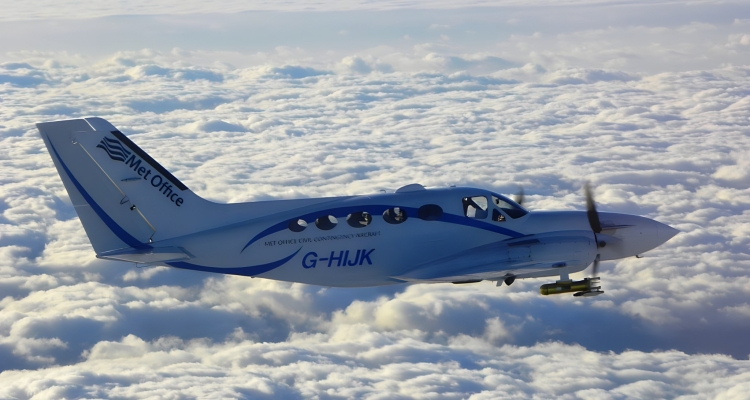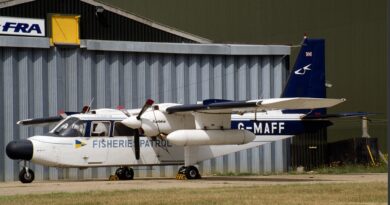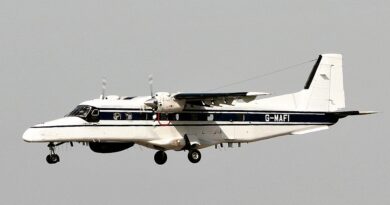MOCCA
The Met Office Civil Contingency Aircraft (MOCCA) was specifically designed for measurement of gases and aerosols in the atmosphere, as well as measurement of local meteorological conditions (e.g. wind, temperature).
Commissioned as a response to the Icelandic volcanic eruption of 2010, it had a role in supporting investigations of volcanic ash around the UK and in assisting in other civil contingencies for which aircraft measurements are required due to the fact the FAAM BAe146 was not on any form of readiness, so its involvement in the response to a particular incident depends on its availability and the configuration of onboard instruments at any given time.
The MOCCA – a twin-piston engine Cessna 421 – was therefore on 24-hour standby, and operated between 500 ft and 30,000 ft over land and sea.
Tasking of the MOCCA was handled through the Hazard Centre as part of the Met Office’s support to incidents where Gold/Strategic Commands have been established. Following a request for assistance, the Met Office seeked to recover the costs associated with the deployment of the aircraft through the lead government authority for the incident.
The Met Office’s atmospheric survey aircraft (Moasa) flew for the last time on 11 April 2022, after funding ended.
Aircraft Reg: G-HIJK
Operated by: Alto Aerospace
Mission Equipment:
LIDAR
Remote sensing of the altitude of particle plumes. Data from the aircraft are sent in real time via satellite link directly to the Hazard Centre at the Met Office’s headquarters in Exeter, enabling forecasters to receive immediate updates on an event.
References:
https://www.researchgate.net/publication/303844781_Remote_Sensing_of_Volcanic_ASH_at_the_Met_Office




